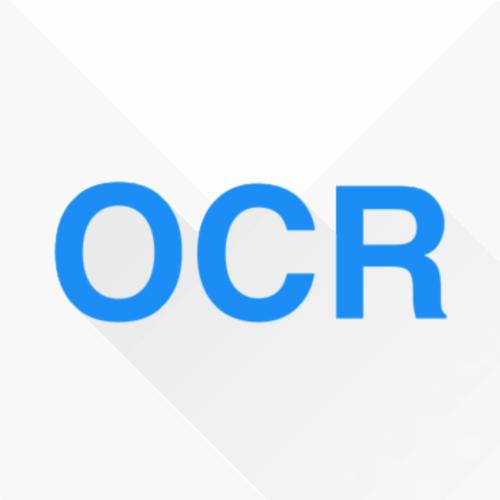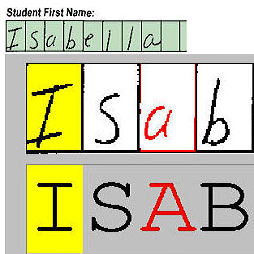知识荟萃
OCR文字,车牌,验证码识别 专知荟萃
入门学习
- 端到端的OCR:基于CNN的实现
- 如何用卷积神经网络CNN识别手写数字集?
- OCR文字识别用的是什么算法?
- 基于计算机视觉/深度学习打造先进OCR工作流 Creating a Modern OCR Pipeline Using Computer Vision and Deep Learning
- 车牌识别中的不分割字符的端到端(End-to-End)识别
- 端到端的OCR:基于CNN的实现
- 腾讯OCR—自动识别技术,探寻文字真实的容颜
- Tesseract-OCR引擎 入门
- 汽车挡风玻璃VIN码识别
- 车牌识别算法的关键技术及其研究现状
- 端到端的OCR:验证码识别
论文及代码
文字识别
- Multi-digit Number Recognition from Street View Imagery using Deep Convolutional Neural Networks
- intro: Google. Ian J. Goodfellow
- arxiv: [https://arxiv.org/abs/1312.6082]
- End-to-End Text Recognition with Convolutional Neural Networks
- Word Spotting and Recognition with Embedded Attributes
- Reading Text in the Wild with Convolutional Neural Networks
- Deep structured output learning for unconstrained text recognition
- arxiv: [http://arxiv.org/abs/1412.5903]
- Deep Features for Text Spotting
- Reading Scene Text in Deep Convolutional Sequences
- arxiv: [http://arxiv.org/abs/1506.04395]
- DeepFont: Identify Your Font from An Image
- arxiv: [http://arxiv.org/abs/1507.03196]
- An End-to-End Trainable Neural Network for Image-based Sequence Recognition and Its Application to Scene Text Recognition
- intro: Convolutional Recurrent Neural Network
- arxiv: [http://arxiv.org/abs/1507.05717]
- github: [https://github.com/bgshih/crnn]
- github: [https://github.com/meijieru/crnn.pytorch]
- Recursive Recurrent Nets with Attention Modeling for OCR in the Wild
- arxiv: [http://arxiv.org/abs/1603.03101]
- Writer-independent Feature Learning for Offline Signature Verification using Deep Convolutional Neural Networks
- arxiv: [http://arxiv.org/abs/1604.00974]
- DeepText: A Unified Framework for Text Proposal Generation and Text Detection in Natural Images
- arxiv: [http://arxiv.org/abs/1605.07314]
- End-to-End Interpretation of the French Street Name Signs Dataset
- End-to-End Subtitle Detection and Recognition for Videos in East Asian Languages via CNN Ensemble with Near-Human-Level Performance
- arxiv: [https://arxiv.org/abs/1611.06159]
- Smart Library: Identifying Books in a Library using Richly Supervised Deep Scene Text Reading
- arxiv: [https://arxiv.org/abs/1611.07385]
- Improving Text Proposals for Scene Images with Fully Convolutional Networks
- intro: Universitat Autonoma de Barcelona & University of Florence
- intro: International Conference on Pattern Recognition - DLPR workshop
- arxiv: [https://arxiv.org/abs/1702.05089]
- Scene Text Eraser
- Attention-based Extraction of Structured Information from Street View Imagery
- intro: University College London & Google Inc
- arxiv: [https://arxiv.org/abs/1704.03549]
- github: [https://github.com/tensorflow/models/tree/master/attention_ocr]
- STN-OCR: A single Neural Network for Text Detection and Text Recognition
- arxiv: [https://arxiv.org/abs/1707.08831]
- github: [https://github.com/Bartzi/stn-ocr]
- Sequence to sequence learning for unconstrained scene text recognition
- intro: master thesis
- arxiv: [http://arxiv.org/abs/1607.06125]
- Drawing and Recognizing Chinese Characters with Recurrent Neural Network
- arxiv: [https://arxiv.org/abs/1606.06539]
- Learning Spatial-Semantic Context with Fully Convolutional Recurrent Network for Online Handwritten Chinese Text Recognition
- intro: correct rates: Dataset-CASIA 97.10% and Dataset-ICDAR 97.15%
- arxiv: [https://arxiv.org/abs/1610.02616]
- Stroke Sequence-Dependent Deep Convolutional Neural Network for Online Handwritten Chinese Character Recognition
- arxiv: [https://arxiv.org/abs/1610.04057]
- Visual attention models for scene text recognition
- Focusing Attention: Towards Accurate Text Recognition in Natural Images
- intro: ICCV 2017
- arxiv: [https://arxiv.org/abs/1709.02054]
- Scene Text Recognition with Sliding Convolutional Character Models
- AdaDNNs: Adaptive Ensemble of Deep Neural Networks for Scene Text Recognition
- A New Hybrid-parameter Recurrent Neural Networks for Online Handwritten Chinese Character Recognition
- Arbitrarily-Oriented Text Recognition
- intro: A method used in ICDAR 2017 word recognition competitions
- arxiv: [https://arxiv.org/abs/1711.04226]
文字检测
-
Object Proposals for Text Extraction in the Wild
- intro: ICDAR 2015
- arxiv: [http://arxiv.org/abs/1509.02317]
- github: [https://github.com/lluisgomez/TextProposals]
-
Text-Attentional Convolutional Neural Networks for Scene Text Detection
- arxiv: [http://arxiv.org/abs/1510.03283]
-
Accurate Text Localization in Natural Image with Cascaded Convolutional Text Network
- arxiv: [http://arxiv.org/abs/1603.09423]
-
Synthetic Data for Text Localisation in Natural Images
- intro: CVPR 2016
- project page: [http://www.robots.ox.ac.uk/~vgg/data/scenetext/]
- arxiv: [http://arxiv.org/abs/1604.06646]
- paper: [http://www.robots.ox.ac.uk/~vgg/data/scenetext/gupta16.pdf]
- github: [https://github.com/ankush-me/SynthText]
-
Scene Text Detection via Holistic, Multi-Channel Prediction
- arxiv: [http://arxiv.org/abs/1606.09002]
-
Detecting Text in Natural Image with Connectionist Text Proposal Network
- intro: ECCV 2016
- arxiv: [http://arxiv.org/abs/1609.03605]
- github: [https://github.com/tianzhi0549/CTPN]
- github: [https://github.com/qingswu/CTPN]
- demo: [http://textdet.com/]
- github: [https://github.com/eragonruan/text-detection-ctpn]
-
TextBoxes: A Fast Text Detector with a Single Deep Neural Network
- intro: AAAI 2017
- arxiv: [https://arxiv.org/abs/1611.06779]
- github: [https://github.com/MhLiao/TextBoxes]
- github: [https://github.com/xiaodiu2010/TextBoxes-TensorFlow]
-
Deep Matching Prior Network: Toward Tighter Multi-oriented Text Detection
- intro: CVPR 2017
- intro: F-measure 70.64%, outperforming the existing state-of-the-art method with F-measure 63.76%
- arxiv: [https://arxiv.org/abs/1703.01425]
-
Detecting Oriented Text in Natural Images by Linking Segments
- intro: CVPR 2017
- arxiv: [https://arxiv.org/abs/1703.06520]
- github: [https://github.com/dengdan/seglink]
-
Deep Direct Regression for Multi-Oriented Scene Text Detection
- arxiv: [https://arxiv.org/abs/1703.08289]
-
Cascaded Segmentation-Detection Networks for Word-Level Text Spotting
-
WordFence: Text Detection in Natural Images with Border Awareness
- intro: ICIP 2017
- arcxiv: [https://arxiv.org/abs/1705.05483]
-
SSD-text detection: Text Detector
- intro: A modified SSD model for text detection
- github: [https://github.com/oyxhust/ssd-text_detection]
-
R2CNN: Rotational Region CNN for Orientation Robust Scene Text Detection
- intro: Samsung R&D Institute China
- arxiv: [https://arxiv.org/abs/1706.09579]
-
R-PHOC: Segmentation-Free Word Spotting using CNN
- intro: ICDAR 2017
- arxiv: [https://arxiv.org/abs/1707.01294]
-
Towards End-to-end Text Spotting with Convolutional Recurrent Neural Networks
-
EAST: An Efficient and Accurate Scene Text Detector
- intro: CVPR 2017
- arxiv: [https://arxiv.org/abs/1704.03155]
- github: [https://github.com/argman/EAST]
-
Deep Scene Text Detection with Connected Component Proposals
- intro: Amap Vision Lab, Alibaba Group
- arxiv: [https://arxiv.org/abs/1708.05133]
-
Single Shot Text Detector with Regional Attention
- intro: ICCV 2017
- arxiv: [https://arxiv.org/abs/1709.00138]
- github: [https://github.com/BestSonny/SSTD]
- code: [http://sstd.whuang.org]
-
Fused Text Segmentation Networks for Multi-oriented Scene Text Detection
-
Deep Residual Text Detection Network for Scene Text
- intro: IAPR International Conference on Document Analysis and Recognition 2017. Samsung R&D Institute of China, Beijing
- arxiv: [https://arxiv.org/abs/1711.04147]
-
Feature Enhancement Network: A Refined Scene Text Detector
- intro: AAAI 2018
- arxiv: [https://arxiv.org/abs/1711.04249]
-
ArbiText: Arbitrary-Oriented Text Detection in Unconstrained Scene
验证码破解
- Using deep learning to break a Captcha system
- intro: "Using Torch code to break simplecaptcha with 92% accuracy"
- blog: [https://deepmlblog.wordpress.com/2016/01/03/how-to-break-a-captcha-system/]
- github: [https://github.com/arunpatala/captcha]
- Breaking reddit captcha with 96% accuracy
- I’m not a human: Breaking the Google reCAPTCHA
- Neural Net CAPTCHA Cracker
- Recurrent neural networks for decoding CAPTCHAS
- Reading irctc captchas with 95% accuracy using deep learning
- I Am Robot: Learning to Break Semantic Image CAPTCHAs
- intro: automatically solving 70.78% of the image reCaptchachallenges, while requiring only 19 seconds per challenge. apply to the Facebook image captcha and achieve an accuracy of 83.5%
- paper: [http://www.cs.columbia.edu/~polakis/papers/sivakorn_eurosp16.pdf]
- SimGAN-Captcha
- intro: Solve captcha without manually labeling a training set
- github: [https://github.com/rickyhan/SimGAN-Captcha]
手写体识别
- High Performance Offline Handwritten Chinese Character Recognition Using GoogLeNet and Directional Feature Maps
- arxiv: [http://arxiv.org/abs/1505.04925]
- github: [https://github.com/zhongzhuoyao/HCCR-GoogLeNet]
- Recognize your handwritten numbers
- Handwritten Digit Recognition using Convolutional Neural Networks in Python with Keras
- MNIST Handwritten Digit Classifier
- LeNet – Convolutional Neural Network in Python
- Scan, Attend and Read: End-to-End Handwritten Paragraph Recognition with MDLSTM Attention
- arxiv: [http://arxiv.org/abs/1604.03286]
- MLPaint: the Real-Time Handwritten Digit Recognizer
- Training a Computer to Recognize Your Handwriting
- Using TensorFlow to create your own handwriting recognition engine
- Building a Deep Handwritten Digits Classifier using Microsoft Cognitive Toolkit
- Hand Writing Recognition Using Convolutional Neural Networks
- intro: This CNN-based model for recognition of hand written digits attains a validation accuracy of 99.2% after training for 12 epochs. Its trained on the MNIST dataset on Kaggle.
- github: [https://github.com/ayushoriginal/HandWritingRecognition-CNN]
- Design of a Very Compact CNN Classifier for Online Handwritten Chinese Character Recognition Using DropWeight and Global Pooling
- intro: 0.57 MB, performance is decreased only by 0.91%.
- arxiv: [https://arxiv.org/abs/1705.05207]
- Handwritten digit string recognition by combination of residual network and RNN-CTC
车牌识别
- Reading Car License Plates Using Deep Convolutional Neural Networks and LSTMs
- arxiv: [http://arxiv.org/abs/1601.05610]
- Number plate recognition with Tensorflow
- end-to-end-for-plate-recognition
- Segmentation-free Vehicle License Plate Recognition using ConvNet-RNN
- intro: International Workshop on Advanced Image Technology, January, 8-10, 2017. Penang, Malaysia. Proceeding IWAIT2017
- arxiv: [https://arxiv.org/abs/1701.06439]
- License Plate Detection and Recognition Using Deeply Learned Convolutional Neural Networks
- Adversarial Generation of Training Examples for Vehicle License Plate Recognition
- Towards End-to-End Car License Plates Detection and Recognition with Deep Neural Networks
实战项目
- 多标签分类,端到端基于mxnet的中文车牌识别
- 中国二代身份证光学识别
- EasyPR 一个开源的中文车牌识别系统
- 汽车挡风玻璃VIN码识别
- CLSTM : A small C++ implementation of LSTM networks, focused on OCR
- github: [https://github.com/tmbdev/clstm]
- OCR text recognition using tensorflow with attention
- github: [https://github.com/pannous/caffe-ocr]
- github: [https://github.com/pannous/tensorflow-ocr]
- Digit Recognition via CNN: digital meter numbers detection
- github: [https://github.com/SHUCV/digit]
- Attention-OCR: Visual Attention based OCR
- github: [https://github.com/da03/Attention-OCR]
- umaru: An OCR-system based on torch using the technique of LSTM/GRU-RNN, CTC and referred to the works of rnnlib and clstm
- github: [https://github.com/edward-zhu/umaru]
- Tesseract.js: Pure Javascript OCR for 62 Languages
- homepage: [http://tesseract.projectnaptha.com/]
- github: [https://github.com/naptha/tesseract.js]
- DeepHCCR: Offline Handwritten Chinese Character Recognition based on GoogLeNet and AlexNet
- github: [https://github.com/chongyangtao/DeepHCCR]
- deep ocr: make a better chinese character recognition OCR than tesseract
- Practical Deep OCR for scene text using CTPN + CRNN
- Text-Detection-using-py-faster-rcnn-framework
- ocropy: Python-based tools for document analysis and OCR
- github: [https://github.com/tmbdev/ocropy]
- Extracting text from an image using Ocropus
视频
- LSTMs for OCR
- youtube: [https://www.youtube.com/watch?v=5vW8faXvnrc]
初步版本,水平有限,有错误或者不完善的地方,欢迎大家提建议和补充,会一直保持更新,本文为专知内容组原创内容,未经允许不得转载,如需转载请发送邮件至fangquanyi@gmail.com 或 联系微信专知小助手(Rancho_Fang)
敬请关注http://www.zhuanzhi.ai 和关注专知公众号,获取第一手AI相关知识


